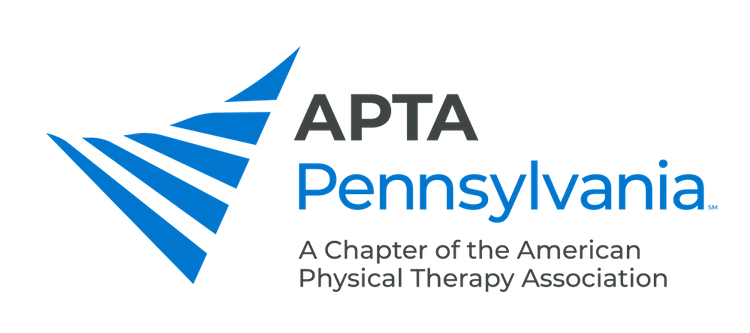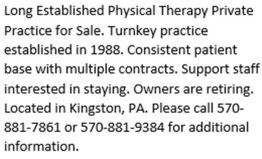March 2022 Federal Advocacy Update
Congressional Update:
- Hill Happenings – an overall look at what’s happening on Capitol Hill
- Appropriations
- Continuing Resolution (CR) passed in Feb, another one needs to pass by March 11
- Omnibus
- Telehealth to be included in some form
- Russia
- Troops sent into eastern Ukraine
- House and Senate Foreign Relations Committees pushing sanctions
- Most of Congress’s attention
- Members and Senators are around the world during this current recess
- Supreme Court vacancy
- Biden promised nominee by end of February
- PTA Differential advocacy
- House - H.R. 5536
- 19 Cosponsors
- Added: Conor Lamb (D-PA), Lisa Blunt Rochester (D-DE), Robin Kelly (D-IL)
- Current balance: 13 D, 6 R
- Senate - looking for sponsor
- Coalition letter on H.R. 5536
- 1% Medicare sequestration moratorium set to come back April 1. We are working with others to extend this as we recover from the pandemic. We’ll send you a copy of the letter when it becomes available.
- We are asking Congress to hold stakeholder meetings for permanent fixes to Medicare. We will share the letter with you when that is available and will ask Key Contacts to participate as well.
Regulatory Update:
MedPAC: In its January 13-14 meetings, MedPAC recommended for FY2023 5% cuts in payments to SNFs, HHAs, and IRFs, and stated that it would issue a report in March on a prototype value-based payment program that could be used in a unified payment system for post-acute care.
- SNFs: MedPAC expressed concern that 1) SNFs had aggregate Medicare margins of 16.5% overall without relief funds and 19.2% with relief funds in 2020, with Medicare margins projected to be 14% in 2022, and 2) Medicare payments comprise 17% of SNF revenues while only accounting for 10% of SNF facility days.
- HHAs: For HHAs, MedPAC noted that HHAs had aggregate Medicare margins of 20.2% in 2020, with projected Medicare margin of 17% for 2022. MedPAC also recommended that the HHS Secretary should require that home health agencies report the telehealth services they provide during a 30-day period.
- IRFs: For IRFs, MedPAC noted that the aggregate Medicare margin was 13.5% in 2020, and projects a 14% margin in 2022. MedPAC also noted that the all-payer total margin for freestanding IRFs is 10.2%.
- LTCHs: MedPAC recommended that the HHS Secretary increase the 2022 Medicare-based payment rate for long-term care hospitals by the market basket minus the applicable productivity adjustment. Medicare margins for LTCHs with a high share of cases qualifying for payment under the LTCH PPS increased to 6.9 percent in 2020 due to temporary PHE-16 related payment policies. MedPAC projected that aggregate Medicare margins in 2022 will be 3%.
- VBP for UPAC: In its March report, MedPAC will report on a prototype value-based payment program that could be used in a unified payment system for post-acute care. The report will consider design elements, will analyze the effects of implementing the program, and make recommendations as appropriate.
Low Back Pain Cost Measure Field Testing:
- As part of its goal to improve quality measurement in Medicare, CMS has invested in the creation of a low back pain (LBP) cost measure (the measure) to improve the MIPS program. The measure may also become available for other payers to use in their value-based payment systems, and so it is critical that PTs weigh in on the measure and make sure that it can work in private PT practices. With that in mind, PPS is encouraging all members to download their field test reports that show how the draft measure would rate their practices based on 2019 and 2020 claims data in Medicare. Once you have downloaded the field test for your practice, PPS is also encouraging you to fill out its associated survey to help improve the measure. The last day to download your report and submit a survey is Friday, February 25, 2022
Medicaid RFI
- Access to Converge and Care in Medicaid and CHIP RFI
- CMS is requesting feedback on a number of issues related to Medicaid including access to services which includes network adequacy, delays in care, appeals, admin burden and most importantly PAYMENT.
- Read the RFI questions here and submit responses here. Comments are due April 18.
- CDC Opioid Guidance
- The Centers for Disease Control and Prevention proposed a opioid prescribing guideline on Feb. 10 that update and expand the agency’s 2016 Guideline for Prescribing Opioids for Chronic Pain.
- Comments are due April 11
Grassroots Update:
- National Advocacy Dinners in April
- Promotional materials to be posted on Hub
- What Hollywood Gets Wrong About Washington Webinar from the Congressional Management
- Foundation
- March 15 at 3:00 p.m. ET and will be recorded
- Register here and note that an email will go out the first week of March to all FALs and
- Key Contacts.
|

